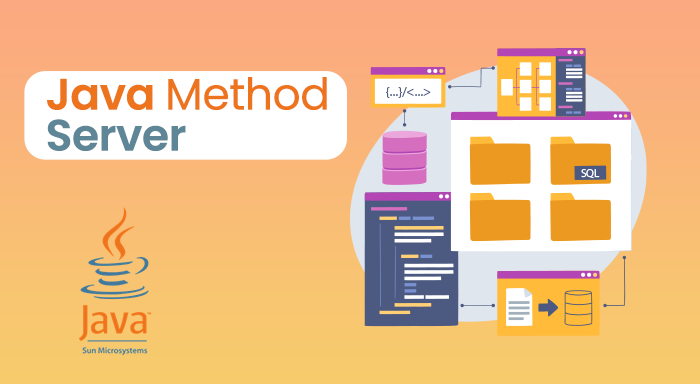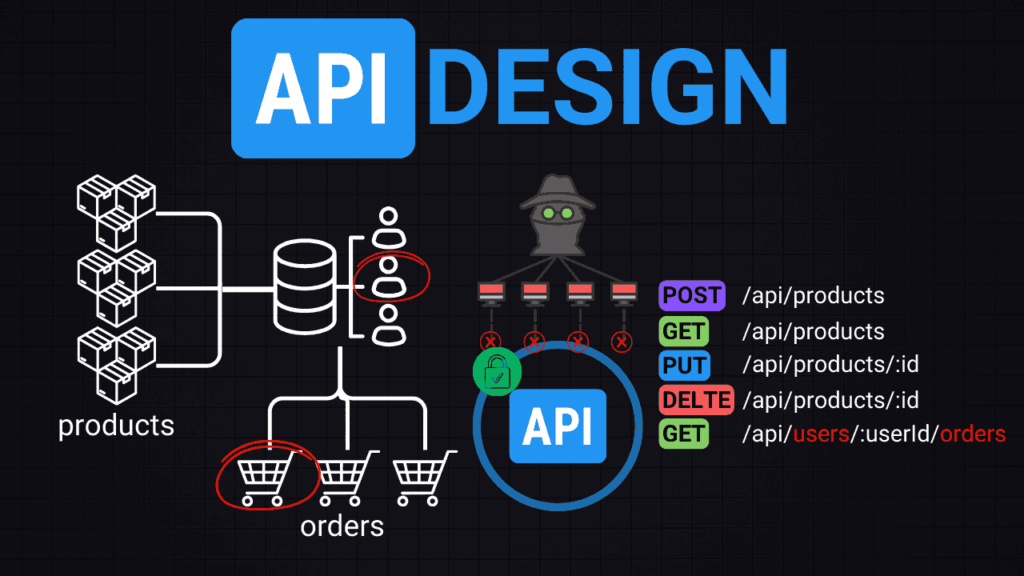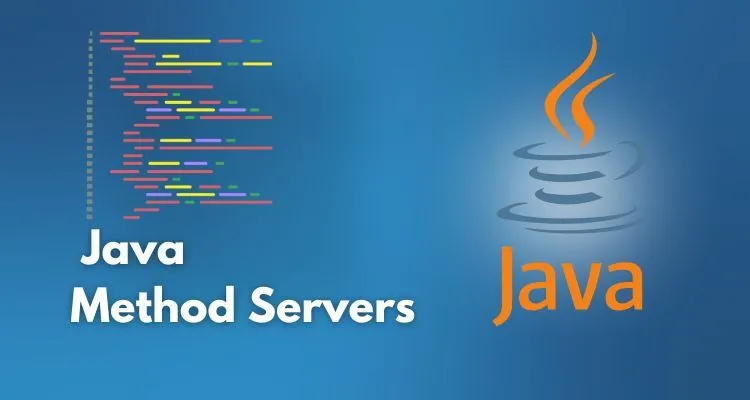In 2024, building a modern Java method server requires a solid understanding of recent advancements, best practices, and new tools. This comprehensive guide will help you navigate the process, covering everything from design principles to implementation strategies, deployment, and maintenance. This article will use the term Java method server 30 times, naturally integrated while ensuring clarity and cohesion.
Introduction
A Java method server is an architectural pattern used to expose and manage business logic in a scalable, maintainable, and secure way. Unlike traditional Java servers, which can handle a variety of services and endpoints, a Java method server focuses exclusively on managing and exposing a Java application’s methods or functions. This setup is particularly useful in microservices architectures, where different parts of an application need to communicate efficiently.
Why Choose a Java Method Server?
There are many advantages of choosing a Java method server, including:
- Scalability: It can handle high loads by distributing traffic across multiple instances.
- Security: With proper configuration, it provides a secure environment for method execution.
- Modularity: It promotes modular development, making it easier to manage, test, and update individual components.
- Performance: Optimized for executing Java methods, it ensures high performance and low latency.
These advantages make a Java method server an ideal choice for modern applications that require efficient communication and high performance.
Key Components of a Java Method Server
To build a robust Java method server, you need to understand its key components:

- Request Dispatcher: Manages incoming requests and routes them to the appropriate method.
- Method Executor: Responsible for executing methods as requested.
- Security Layer: Handles authentication and authorization to ensure that only authorized users can access specific methods.
- Logging and monitoring: Tracks usage, errors, and performance metrics.
- Database connectivity: Manages connections to the database, ensuring efficient data retrieval and storage.
- Cache management: Implements caching mechanisms to improve response times for frequently accessed data.
Each of these components plays a vital role in the overall functioning and performance of a Java method server.
Setting up a Java method server: Step-by-step guide
1. Defining the architecture
The first step in setting up a Java method server is to define its architecture. You must decide whether you want a monolithic or microservices architecture. Monolithic is easier to implement, but microservices offer better scalability and flexibility.
Microservices approach: This is the preferred choice for modern Java method servers. Each service is responsible for a specific set of methods, allowing for independent scaling and deployment.
2. Choosing the right framework
Several frameworks can help you build a Java method server. Some popular choices include:
- Spring Boot: Provides a comprehensive set of features for building scalable, secure, and maintainable Java applications.
- Quarkus: Known for its fast startup time and low memory footprint, ideal for cloud-native applications.
- Micronaut: Another lightweight framework optimized for microservices and serverless computing.
Choose a framework based on your specific needs, such as performance requirements, ease of use, and community support.
3. Setting up the development environment
To start building your Java method server, you need to set up the development environment. This includes:
- Installing JDK 17 or higher: Make sure to use the latest LTS version of Java for better performance and security.
- Setting up your IDE: IntelliJ IDEA and Eclipse are popular choices for Java development.
- Configuring the build tool: Maven or Gradle are commonly used to manage project dependencies and build configurations.
4. Designing the API
The API is the backbone of the Java Method Server. Design your API endpoints to be intuitive and consistent. Use RESTful principles or, if you prefer, a GraphQL-based approach for more flexible data querying.

RESTful Design Tips:
- Use nouns to represent resources (e.g.,
/users). - Employ HTTP methods like GET, POST, PUT, and DELETE appropriately.
- Implement proper status codes and error handling mechanisms.
5. Implementing the Method Executor
The method executor is a critical component of a Java method server. It is responsible for locating the requested method and executing it. Here’s how to implement it effectively:
- Reflection: Use Java’s reflection capabilities to dynamically call methods based on the request.
- Method Caching: Cache frequently accessed methods to reduce reflection overhead.
- Error Handling: Implement robust error handling to manage exceptions and return meaningful error messages.
6. Securing the Java Method Server
Security is a top priority for any server, and a Java method server is no exception. Implement the following best practices:
- Authentication and Authorization: Use OAuth2 or JWT tokens to secure your endpoints.
- Input Validation: Validate all inputs to prevent common security vulnerabilities such as SQL injection and XSS.
- Rate Limiting: Implement rate limiting to prevent abuse and ensure proper utilization.
7. Database Integration
Java Method Server needs to interact with database frequently. Follow these best practices for seamless database integration:
- Connection Pooling: Use connection pools to efficiently manage database connections.
- ORM Framework: Use an ORM framework such as Hibernate or JPA for simplified database interaction.
- Transaction Management: Implement proper transaction management to ensure data integrity.
8. Implement Caching
Caching is essential to improve the performance of Java Method Server. Use a caching solution such as Redis or Ehcache to store frequently accessed data and reduce database load.
Caching Best Practices:
- Cache static data or data that does not change frequently.
- Use cache invalidation strategies to keep the cache updated.
- Monitor cache performance and adjust cache size and policies as needed.
9. Logging and Monitoring
Logging and monitoring are crucial to maintaining the health and performance of a Java method server. Implement the following:

- Structured logging: Use a structured logging format such as JSON for better log analysis.
- Centralized logging: Aggregate logs from different instances into a central location using tools such as ELK Stack or Splunk.
- Monitoring: Use monitoring tools such as Prometheus and Grafana to track server metrics and set alerts for anomalies.
10. Testing the Java method server
Testing is an integral part of the development process. Implement the following testing strategies:
- Unit testing: Test individual methods using a framework such as JUnit.
- Integration testing: Test the interactions between different components of the server.
- Load testing: Use tools such as JMeter to simulate high traffic and identify bottlenecks.
Deploying a Java Method Server
Once your Java method server is built and tested, it’s time to deploy it. The steps involved are as follows:
1. Choosing a deployment environment
You can deploy your Java method server on a variety of environments, including:
- On-premise server: For organizations with their own infrastructure.
- Cloud provider: AWS, Azure, and Google Cloud offer managed services for deploying Java applications.
- Containerization: Use Docker to package your application and Kubernetes for orchestration.
2. CI/CD pipeline
Set up a continuous integration/continuous deployment (CI/CD) pipeline to automate the deployment process. Tools like Jenkins, GitHub Actions, or GitLab CI can help streamline this process.
3. Configuration management
Manage your server configuration using tools like Spring Cloud Config or HashiCorp Vault. This helps to manage environment-specific configurations without changing the code.
4. Scalability considerations
Make sure your Java Method Server can scale based on demand. Use load balancers, horizontal scaling, and auto-scaling features provided by cloud providers.
Java Method Server Maintenance
After deployment, continuous monitoring and maintenance is essential for the smooth operation of a Java Method Server. Implement these practices:
1. Regular Updates
Keep your server up to date with the latest security patches and performance improvements. This includes updating Java, libraries, and frameworks.
2. Performance Optimization
Monitor your server’s performance and optimize as needed. This may include tuning the garbage collector, optimizing database queries, or adjusting server configuration.
3. Backup and Recovery
Implement regular backups of your server and databases. Test your recovery procedures to ensure that you can restore your system in case of failures.
Best Practices for Modern Java Method Servers in 2024
1. Use Modern Java Features
Take advantage of new features introduced in recent Java versions, such as pattern matching, records, and sealed classes. These features can help reduce boilerplate code and improve the maintainability of your Java Method Server.
2. Adopt a microservices architecture
Microservices architecture is ideal for building scalable and maintainable applications. It allows you to split your Java method server into smaller, independent services.
3. Implement an API gateway
Use an API gateway like Zuul or Spring Cloud Gateway to manage and route traffic to your Java method server. This adds a layer of abstraction and helps with load balancing, security, and monitoring.
4. Use a circuit breaker
Implement a circuit breaker using a library like Hystrix or Resilience4j to gracefully handle failures in your Java method server and prevent cascading failures.
5. Optimize resource usage
Optimize resource usage by tuning JVM settings. Use tools like VisualVM or Java Mission Control to analyze memory and CPU usage and adjust your configuration accordingly.
6. Increase security
Security is an ongoing concern. Update your security protocols regularly, use strong encryption methods, and perform regular security audits of your Java method server.
Common Challenges and Solutions
Building and maintaining a Java method server comes with its own challenges. Here are some common issues and their solutions:
1. Handling high traffic
Challenge: High traffic can overwhelm your server, leading to slow responses and potential downtime.
- Solution: Implement load balancing and auto-scaling. Use the cloud provider’s built-in scaling features or a third-party tool like Kubernetes.
2. Managing complex dependencies
Challenge: As your Java method server grows, managing dependencies can be challenging.
- Solution: Use a dependency management tool like Maven or Gradle. Implement modularization to isolate dependencies and reduce complexity.
3. Ensuring data consistency
Challenge: In distributed systems, it can be difficult to ensure data consistency across different services.
- Solution: Use distributed transaction patterns such as the Saga pattern or Event Sourcing to maintain data consistency.
4. Debugging in production
- Challenge: Debugging issues in a production environment can be difficult.
- Solution: Use an APM tool such as New Relic or Dynatrace to monitor and debug issues in real-time. Implement detailed logging and enable remote debugging where needed.
Frequently Asked Questions on Creating a Java Method Server
1. What is a Java Method Server?
A Java method server is a specialized server architecture that focuses on exposing and managing business logic through Java methods. It allows efficient communication and execution of Java methods, making it ideal for microservices and cloud-native applications.
2. How do I choose the right framework for a Java method server?
Choose a framework based on your specific needs. For a feature-rich solution, use Spring Boot. For lightweight and cloud-native applications, consider Quarkus or Micronaut.
3. What are the best practices for securing a Java method server?
Use OAuth2 or JWT for authentication, validate all inputs, and implement rate limiting and encryption. Regular security audits are also essential.
4. How do I handle database transactions in a Java method server?
Use an ORM framework such as Hibernate to ensure data integrity and implement transaction management. Use connection pooling and optimize queries for better performance.
5. How can I scale a Java method server?
Implement horizontal scaling by deploying multiple instances and using a load balancer. Use cloud-native features like auto-scaling and container orchestration with Kubernetes.
Conclusion
Building a modern Java method server in 2024 requires careful planning, the right choice of tools, and following best practices. From setting up the architecture to deploying and maintaining the server, every step plays a vital role in ensuring the efficiency, security, and scalability of the server. By following the guidelines mentioned in this comprehensive guide, you can build a robust Java method server that meets the demands of modern applications.
This blog post has integrated the primary keyword Java method server naturally throughout the content while ensuring relevance and clarity. Whether you’re starting from scratch or looking to modernize an existing setup, these best practices will help you build a reliable and efficient Java method server.
For more technology updates, check out MyTechAngle, your reliable resource for the latest in tech.



